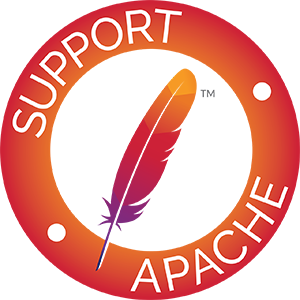Amazon Web Services: Getting Started Guide
This page helps you get started with jclouds API with Amazon Web Services
- Sign up for Amazon Web Services Signup.
- Get your Access Key ID and Secret Access Key by going to this page. As a best practise, do NOT use AWS account level credentials. Instead create a new user through AWS Identity and Access Management (IAM) and grant adequate permissions to the user. Use Access Key ID and Secret Access Key for this newly created user.
- Ensure you are using a recent JDK 6 version.
- Setup your project to include aws-ec2 and aws-s3.
- Get the dependencies
org.apache.jclouds.provider/aws-ec2andorg.apache.jclouds.provider/aws-s3using jclouds Installation. - In order to use the SshjSshClientModule and Log4JLoggingModule you have to get dependencies
org.apache.jclouds.driver/jclouds-sshjandorg.apache.jclouds.driver/jclouds-sl4j.
- Get the dependencies
- Start coding
Using S3
import static org.jclouds.aws.s3.options.PutObjectOptions.Builder.withAcl;
// get a context with amazon that offers the portable BlobStore API
BlobStoreContext context = ContextBuilder.newBuilder("aws-s3")
.credentials(accesskeyid, secretkey)
.buildView(BlobStoreContext.class);
// create a container in the default location
BlobStore blobStore = context.getBlobStore();
blobStore.createContainerInLocation(null, bucket);
// add blob
Blob blob = blobStore.newBlob("test");
blob.setPayload("test data");
blobStore.putBlob(bucket, blob);
// when you need access to s3-specific features,
// use the provider-specific context
AWSS3Client s3Client =
AWSS3Client.class.cast(context.getProviderSpecificContext().getApi());
// make the object world readable
String publicReadWriteObjectKey = "public-read-write-acl";
S3Object object = s3Client.newS3Object();
object.getMetadata().setKey(publicReadWriteObjectKey);
object.setPayload("hello world");
s3Client.putObject(bucket, object, withAcl(CannedAccessPolicy.PUBLIC_READ));
context.close();Using EC2
// get a context with ec2 that offers the portable ComputeService API
ComputeServiceContext context = ContextBuilder.newBuilder("aws-ec2")
.credentials(accesskeyid, secretkey)
.modules(ImmutableSet.<Module> of(new Log4JLoggingModule(),
new SshjSshClientModule()))
.buildView(ComputeServiceContext.class);
// here's an example of the portable api
Set<? extends Location> locations =
context.getComputeService().listAssignableLocations();
Set<? extends Image> images = context.getComputeService().listImages();
// pick the highest version of the RightScale CentOS template
Template template = context.getComputeService().templateBuilder().osFamily(OsFamily.CENTOS).build();
// specify your own groups which already have the correct rules applied
template.getOptions().as(AWSEC2TemplateOptions.class).securityGroups(group1);
// specify your own keypair for use in creating nodes
template.getOptions().as(AWSEC2TemplateOptions.class).keyPair(keyPair);
// run a couple nodes accessible via group
Set<? extends NodeMetadata> nodes = context.getComputeService().createNodesInGroup("webserver", 2, template);
// when you need access to very ec2-specific features, use the provider-specific context
AWSEC2Client ec2Client = AWSEC2Client.class.cast(context.getProviderSpecificContext().getApi());
// ex. to get an ip and associate it with a node
NodeMetadata node = Iterables.get(nodes, 0);
String ip = ec2Client.getElasticIPAddressServices().allocateAddressInRegion(node.getLocation().getId());
ec2Client.getElasticIPAddressServices().associateAddressInRegion(node.getLocation().getId(),ip, node.getProviderId());
context.close();
